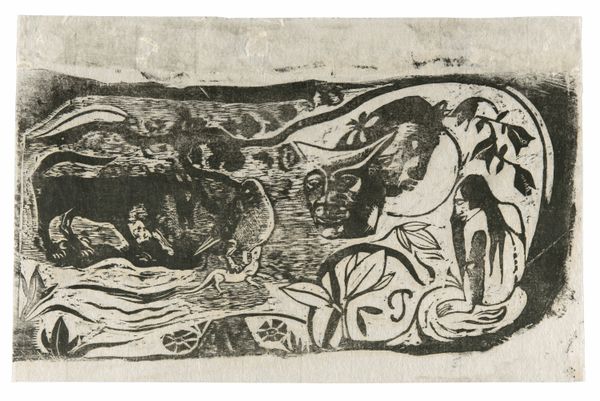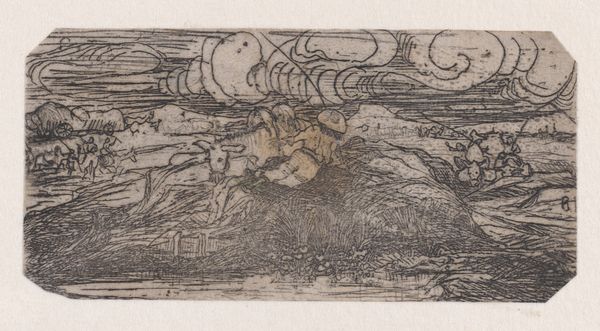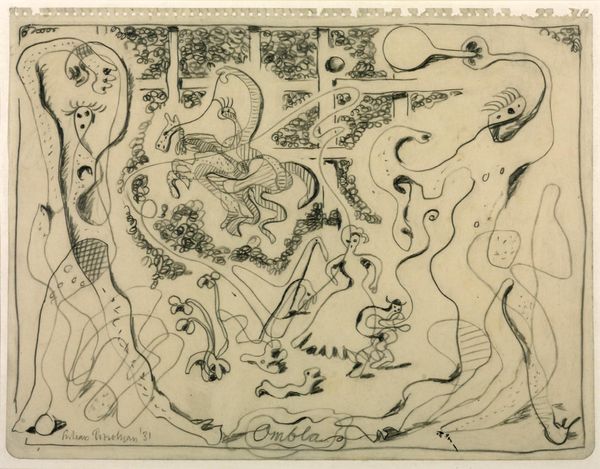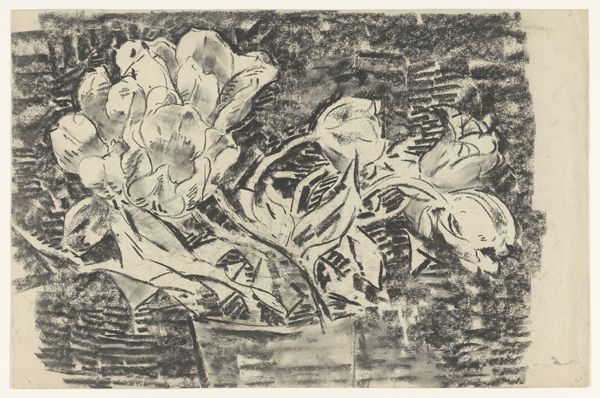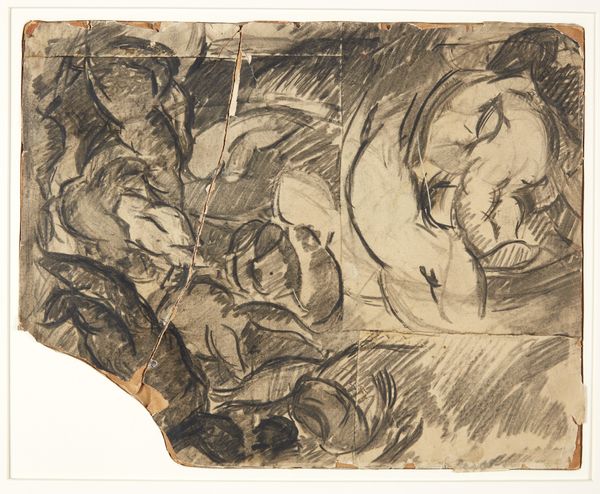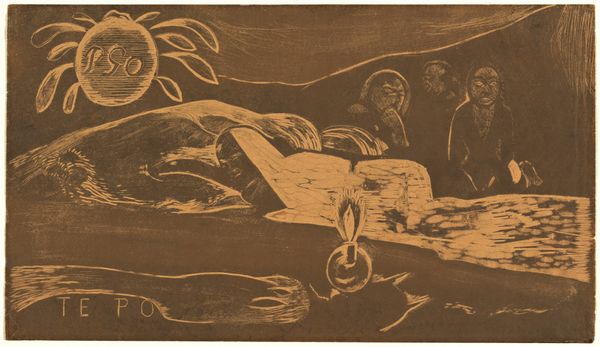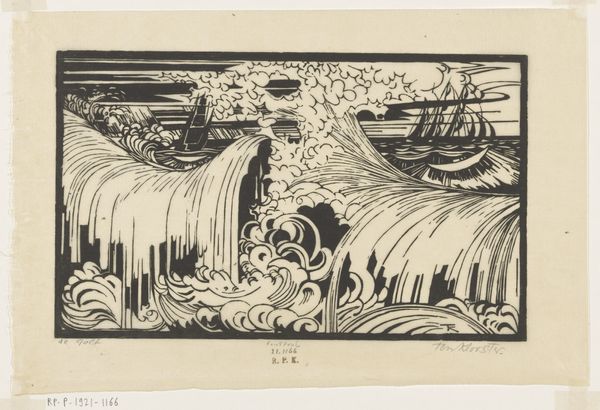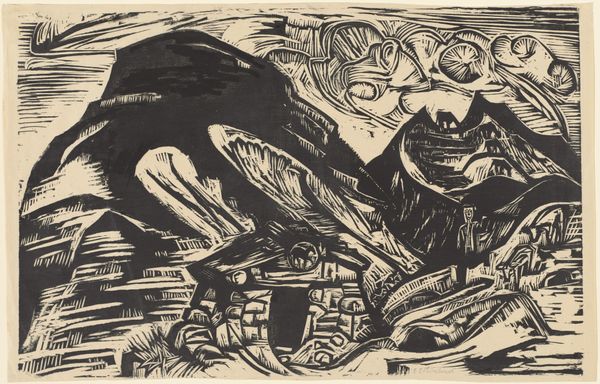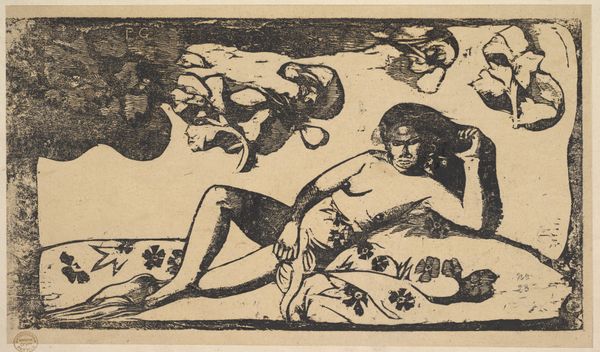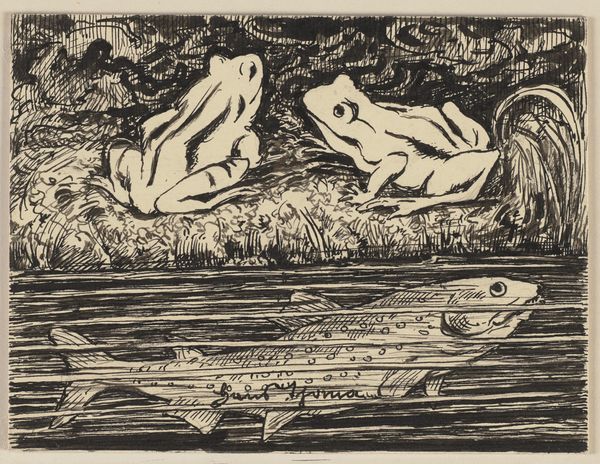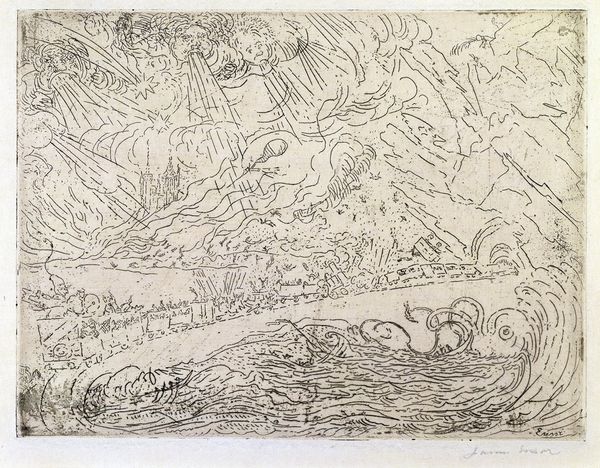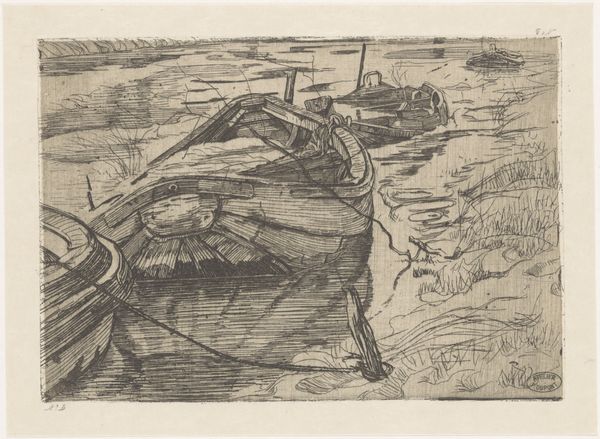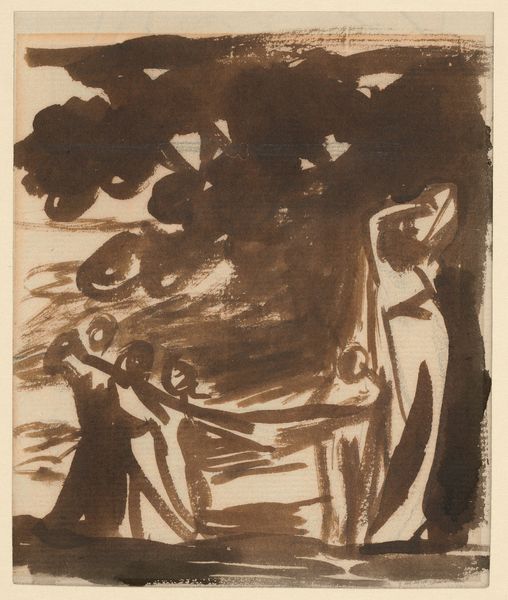
drawing, print, woodcut
#
drawing
#
ink drawing
#
narrative-art
#
pen drawing
# print
#
pen sketch
#
landscape
#
figuration
#
woodcut
#
symbolism
#
post-impressionism
Dimensions: 5 5/8 x 11 1/4 in. block 6 7/8 x 11 3/8 in. paper
Copyright: Public Domain
Curator: Here we have Paul Gauguin's woodcut, "Woodcut with a Horned Head," created between 1898 and 1899. Editor: Immediately striking. The stark contrast, the crude carving—it evokes a primal, almost brutal feeling. Look at how he’s worked the material. Curator: The simplified forms and the lack of traditional perspective are hallmarks of Gauguin’s Post-Impressionist style. This piece reflects his broader interest in non-Western artistic traditions and his time spent in Tahiti. It really shows his ambition to circumvent the established Parisian art world by embracing this “primitive” style, as it was called then. Editor: And isn't it about more than just style? Notice the density of the carving, and the bold gouges left from removing the wood? This speaks to the labour involved, doesn’t it? Each cut of the knife leaves its mark – almost a form of embodied labor on the surface. Gauguin isn’t just depicting a scene, he’s showcasing the raw physicality of making. Curator: Absolutely. The narrative is deliberately ambiguous. The horned head, the figure seated pensively – they lend themselves to layers of interpretation influenced by Polynesian mythology, but it’s worth asking: whose story are we seeing, and how does Gauguin participate in this appropriation of culture? Editor: Exactly. There's that tension again, between idealization and what the materiality suggests. Is the roughness a kind of refusal of high art polish? Are we meant to consider the whole process as critical, as almost performance? It is meant to provoke. Curator: It speaks volumes about the complicated relationship between the European artistic avant-garde and cultures perceived as “other.” This woodcut served to legitimize non-Western approaches to image-making within Western art institutions. Gauguin deliberately positioned himself as an outsider artist offering something authentic in contrast to academic art. Editor: An authentic fabrication maybe! Look closer: the imperfections, the unevenness, perhaps are also quite contrived. The very medium reinforces the constructed-ness of this idea. I can feel the tension of the cutting and the deliberate roughness of this woodblock in this very image. Curator: His project sought to reimagine what art could be. Looking at "Woodcut with a Horned Head", it challenges our preconceptions about art’s purpose, while bringing up urgent questions about cultural exchange and representation. Editor: Yes, while the questions about fabrication and cultural appropriation complicate our reading of its imagery and materiality. But nonetheless, I will still find the whole production, a worthwhile process.
Comments
No comments
Be the first to comment and join the conversation on the ultimate creative platform.
